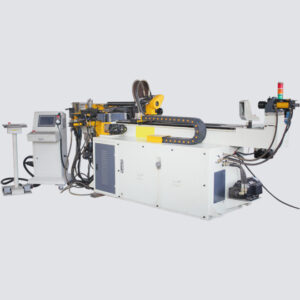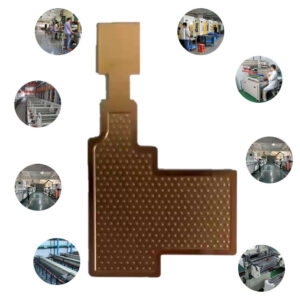
Tube Decoiler Types: Comprehensive Guide for Coil Handling Systems
Tube decoiler is an essential device for metal tube and pipe production lines.
It is responsible for unwinding the coils of steel, copper, aluminum, and other materials evenly.
There are various tube decoiler types to meet different application needs and production capacity.
Selecting the appropriate tube decoiler type can enhance productivity, safety, and product quality.
This article will provide an overview of the primary tube decoiler types and structures.
We will also explore the advantages, performance characteristics, and selection recommendations for manufacturers.
Learn more about coil handling safety at Fabricators & Manufacturers Association.


1. What Is a Tube Decoiler
Tube decoiler, tube uncoiler, de-coiling machine – is a special equipment that feeds coils of raw material materials into forming, welding, cutting systems.
As the name implies, the function is to unwind the coiled strip or tube in an automatic way.
Furthermore, the tube decoiler should keep stable tension of material feeding in the whole operation process.
In addition, smooth feeding without scratching or deformation is another requirement of a tube decoiler.
With development of automatic production lines, people use automatic decoiler to reduce human intervention to some extent and improve efficiency.
Explore our Tube Mill Line to see how tube decoilers integrate with production systems.
2. Major Tube Decoiler Types
The following tube decoiler types are the common ones we can find in industrial production:
A:Manual Decoiler
- The simplest decoiler type is manual one.
- The operator is required to load and rotate the coil.
- Suitable for small-scale or test production, it is cost-effective but has low speed and more labor input.
B:Motorized Decoiler
- Motorized tube decoiler is equipped with electric motor to rotate the coil.
- The motor provides speed control for smooth unwinding and better tension control.
- Also, with programming, it can synchronize with other feeding devices automatically.
- Suitable for medium-volume production, motorized tube decoiler is often selected for various tube production lines.
C:Hydraulic Decoiler
- The hydraulic decoiler uses hydraulic cylinders for expansion and clamping to hold the coil tightly.
- Suitable for large, heavy coils, hydraulic decoiler can ensure production safety.
- Hydraulic decoiler can also automatically adjust inner diameter and tension by itself.
- Hydraulic tube decoilers are widely used in steel tube, plate, and coil production lines.
D:Double-Head Decoiler
- The double-head tube decoiler design mounts two coils on a rotating base.
- While one coil is used to feed material, another coil can be preloaded or maintained for the next batch.
- This configuration reduces the downtime between coil change and maximizes the operation time, improving continuity.
- Therefore, many high-speed tube production lines equip double-head tube decoilers for better efficiency.
E:Automatic Decoiler with Straightener
- The advanced type of tube decoiler integrates the unit with straightener into one piece.
- Tube straightening will be done at the same time as uncoiling the tube.
- It saves installation space, reduces line complexity and greatly shortens production line setup time.
- Automatic decoiler with integrated straightener can be fully automatic with servo drive, sensors and PLC for precise tension, speed control and feedback.
F:Servo-Controlled Decoiler
- The servo-controlled tube decoiler has the most accurate tension and speed control.
- Feedback control maintains stable parameters in operation.
- Servo-controlled tube decoiler is best for thin or fragile material that is easily deformed or damaged and thus requires gentle handling.
3. Key Features of Tube Decoilers
In addition to the basic types of tube decoiler, there are also some performance features we can find in modern tube decoilers, including:
- Variable speed motor for controlled speed.
- Hydraulic expansion system for coil holding.
- Tension arm for better tension and stable feeding.
- Safety braking system for easy stop.
- Adjustable mandrel to fit various coil diameters.
- Optional coil car to assist loading heavy coil.
The combination of the above features on tube decoiler equipment can ensure stable, safe operation. At the same time, automation reduces human error and improves energy efficiency.
4. Advantages of Choosing the Right Decoiler
Selecting the right tube decoiler type for the production line brings many advantages:
- Smooth Operation:The stable operation of the tube decoiler prevents the material from tangling or jerking.
- Improved Safety:Hydraulic coil clamping design can increase the safety of operation and reduce accidents.
- Higher Productivity:Continuous material feeding can shorten changeover time, greatly increasing productivity.
- Better Quality:Better tension control can prevent scratching and deformation on tube surface, resulting in better quality.
- Low Maintenance:Advanced types need little manual adjustment, greatly reducing maintenance.
Therefore, for every tube production line, it is essential to understand the proper tube decoiler structure.
5. Applications of Tube Decoilers
Tube decoilers are applied in various industries for coil handling:
- Steel Tube Mills– to feed the strip into welding systems.
- Heat Exchanger Production– copper or aluminum coil feeding.
- Automotive Components– precision tube materials feeding.
- HVAC Systems– coil unwinding for fin tube production lines.
- Construction Materials– steel pipe or profile coil uncoiling.
Tube decoilers are also usually combined with tube forming machine, straightener, tube cutting unit to form a complete automatic production line.
6. How to Select the Right Tube Decoiler Type
The following factors help to select the right tube decoiler for the production line:
- Material Type:steel, copper, aluminum, stainless steel, etc.
- Coil Weight and Width:will determine the hydraulic or motor drive power.
- Production Speed:high-speed production requires servo or double-head tube decoiler
- Automation Level:manual, semi-auto or fully automatic.
- Budget and Maintenance:Choose a balance between economy and performance.
In addition, manufacturers should also pay attention to the compatibility of the tube decoiler with other equipment downstream.
7. Tube Decoiler Structure Overview
The tube decoiler usually consists of the following main parts:
- Frame:Frame is the support for the coil load.
- Mandrel:The mandrel is the internal part of the tube decoiler that is in contact with the coil.
- Motor or Hydraulic Drive:Motor or hydraulic drive is used to power the rotation of the tube decoiler.
- Brake System:Brake system is to control the tension of the material feeding and to stop the rotation of the tube decoiler at a safe speed.
- Sensor or Tension Arm:Used to maintain a stable material feeding speed during operation.
The tube decoiler structure is quite simple and rugged, which can handle the heavy load well.
8. Common Questions
Q1: How many tons of coil weight can a hydraulic decoiler support?
A: Hydraulic decoilers can support up to 15 tons in some designs.
Q2: Can a single decoiler unit support different sizes of tubes?
A: Yes. By using an adjustable mandrel, you can change the coil diameter and width.
Q3: What is the difference between manual and motorized decoilers?
A: Motorized decoilers have the added benefit of automatic feeding and improved speed control.
Q4: Do I need to add a straightener?
A: If precise tube forming is required, then yes. The inclusion of a straightener will improve feeding stability.
Q5: How often should I service my decoiler?
A: Performing regular maintenance every 3–6 months will help ensure your decoiler runs reliably.
9. Conclusion
To sum up, choosing the proper type of tube decoiler is an important step in maintaining a safe and stable production process that is also efficient and cost-effective.
Manual, motorized, hydraulic, and servo are just a few of the various tube decoiler models available.
A manufacturer can improve product quality and reduce production costs by selecting the proper design for the materials used and production speeds required.
Tube decoiler systems with intelligent automation are becoming more prevalent as tube manufacturing operations modernize.
For quicker throughput, more consistent tension, and easier long-term reliability, they are a vital step forward.
To receive the best performance, be sure to choose a tube decoiler made by a reputable manufacturer with years of experience and advanced technology.


